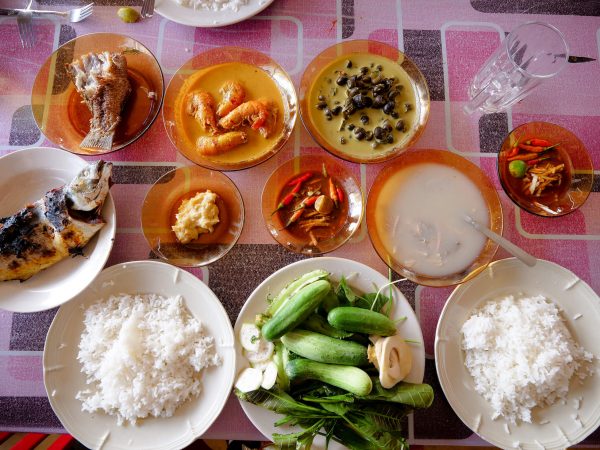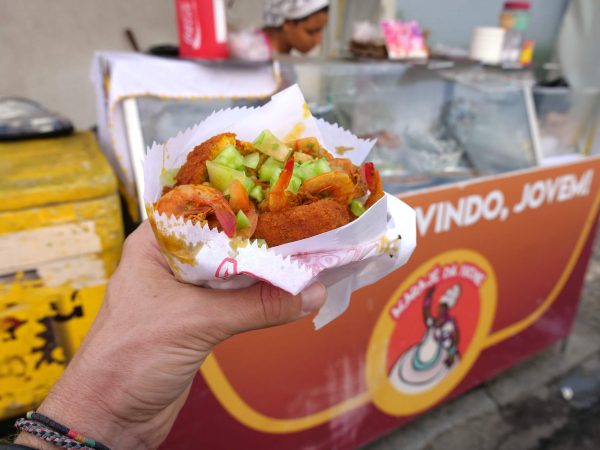
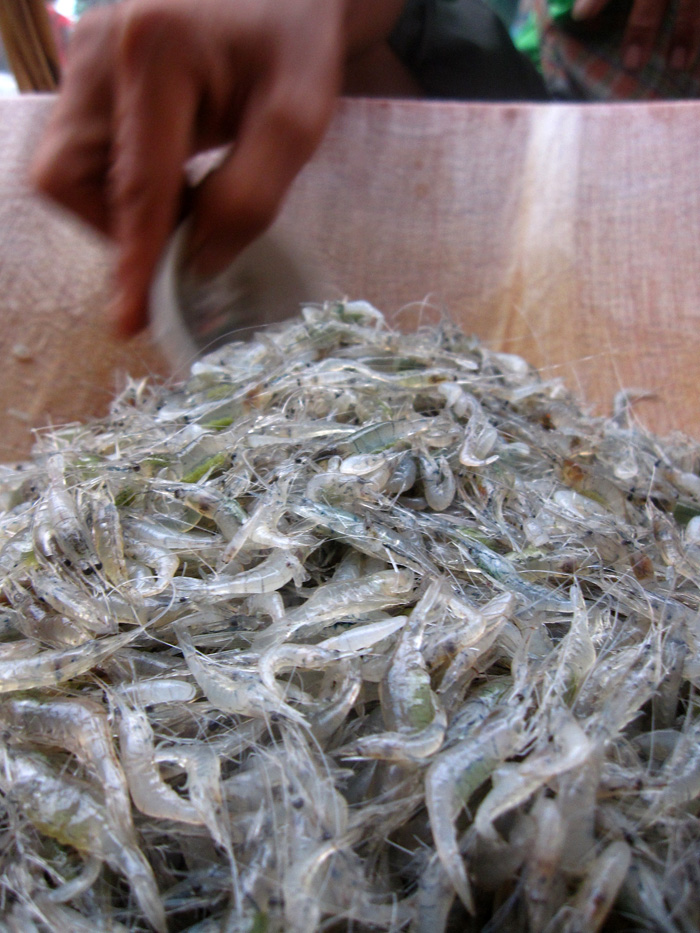
Watch the video now!
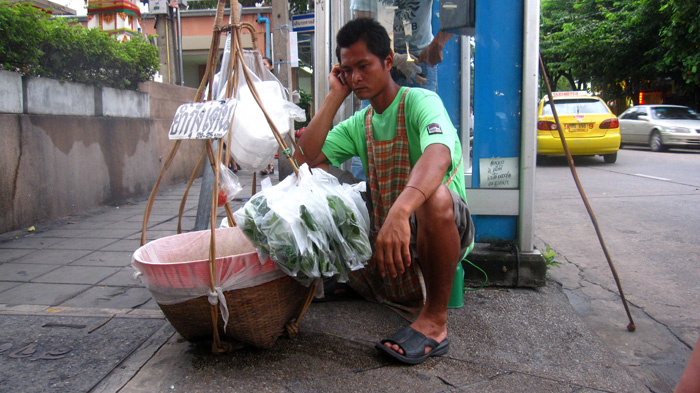
There’s nothing fresher than still alive!
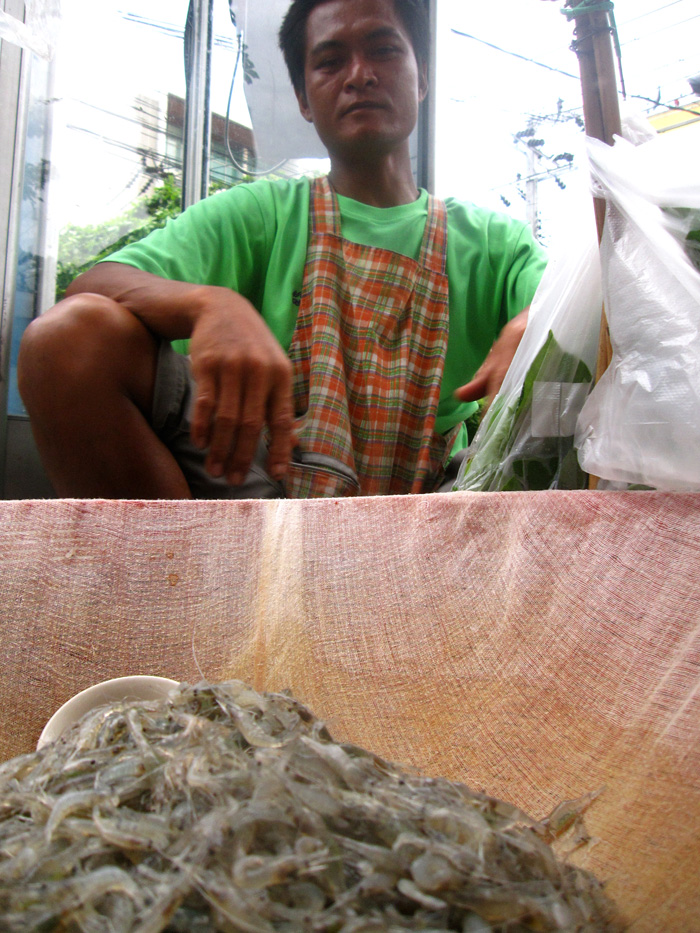
The Thai name of the dish is Goong Ten (กุ้งเต้น), which translates to “dancing shrimp.”
The cute little translucent shrimp are the main event – and they’re still living.
Goong Ten (Dancing Shrimp) is a traditional Isaan food that originates from the region of Thailand along the Mekong River.
People in this region have an affair with things that are prepared raw; Beef, pork, shrimp, fish, and other protein meats that are cooked elsewhere in the world can be found in their naturally squirming or bloody form in Isaan.
Many of the regional dishes are mixed with fiery chilies, salty fish sauce, earthly herbs and generous squirts of sour lime juice. This exciting dressing is what coats the raw meats and gives them superior flavor.
Though Thai street food in Bangkok comes with overwhelming supply, dancing shrimp can be challenging to locate. The dish is not normally served at restaurants but rather must be purchased to-go and eaten along the side of the street or in a local Thai market.
Get exclusive updates
Enter your email and I’ll send you the best travel food content.
In Bangkok, dancing shrimp are almost exclusively sold from traditional double basket carrying carts. One side is filled with the arrangement of spices and herbs while the other side shelters the precious shrimp, hammocked in a cloth so they remain alive and can’t escape.
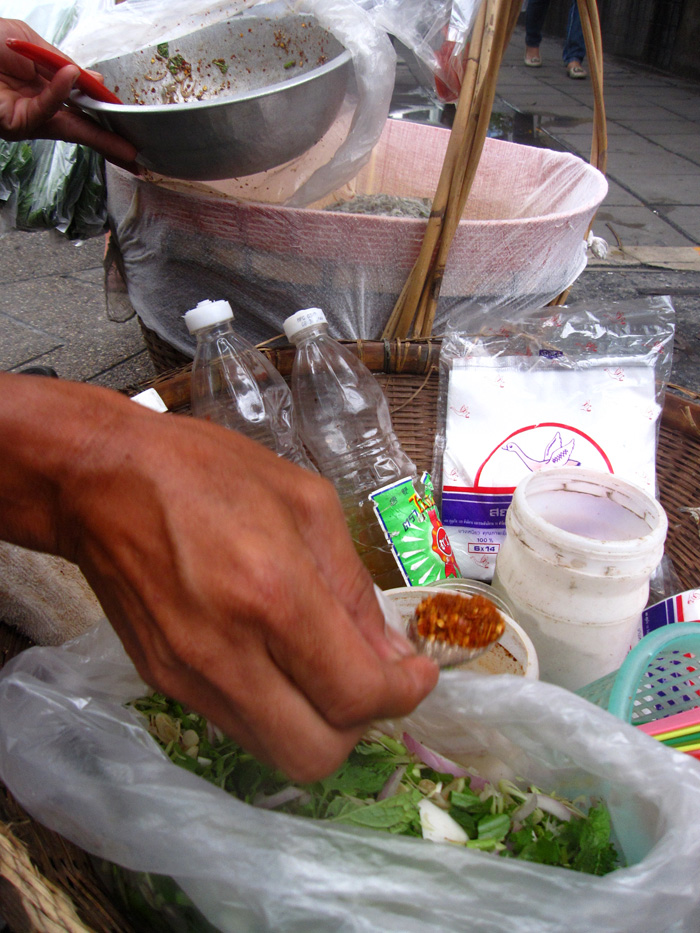
The Preparation of Dancing Shrimp
The vendor quickly took to action, putting a double scoop of the freshwater shrimp into a metal mixing bowl. Separated from the lump grave of the other shrimp, the ones in the metal bowl came to life and started dancing their hearts out.
To prevent the shrimp from escaping the dish preparation, the vendor had to cover the bowl with a plastic bag. I could still hear the sound of metal being tapped, the ricocheting of energetic shrimp jumping around in search of an escape route.
After the shrimp, the vendor threw in a couple dollops of chili flakes, a squirt of fish sauce, a splash of lime juice and finally a handful of herbs that included mint leaves, finely sliced lemongrass, saw leaf herb and some slivered shallots.
He took a metal spoon and instead of heavily mixing the ingredients together, he softly folded the shrimp together with the spices, marinating them alive!
The vendor opened a styrofoam package, placed a little piece of plastic at the bottom and swiftly transferred the intricate mixed dish without letting any shrimp out.
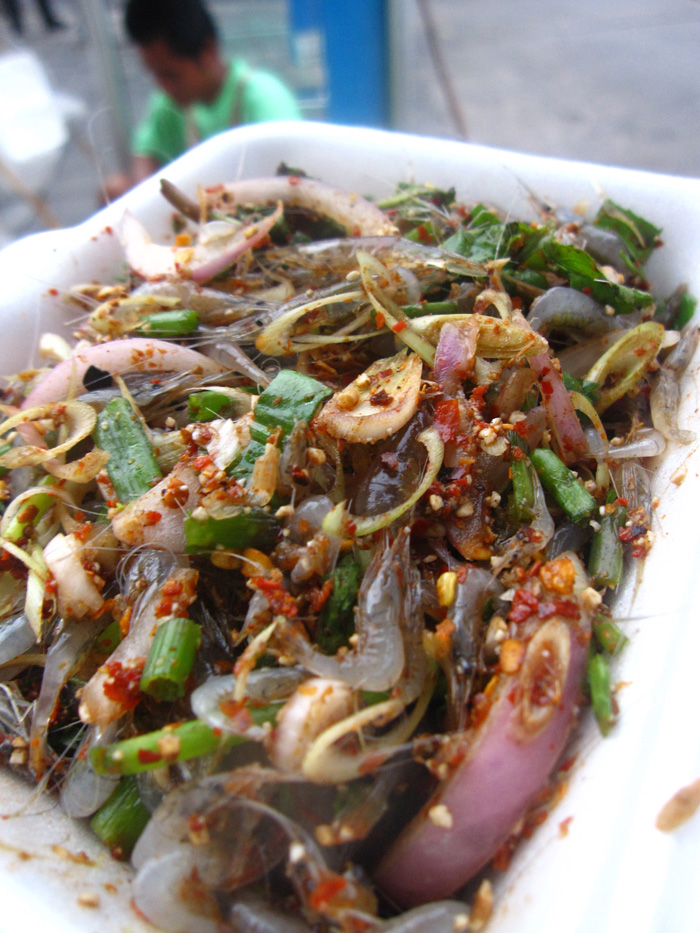
Eating Dancing Shrimp (กุ้งเต้น)
After watching the vendor stir up his speciality with precision, my excitement began to race.
I couldn’t wait for my first bite!
I cautiously opened the container and peeked into the scene that looked like a mosh pit. At this point the shrimp were probably dancing due to the abundance of chilies coated on themselves.
My first bite was that of sheer pleasure, the kind of incredible flavor that paralyzes your body and puts you into a state of flavor overjoy. Each individual shrimp was a little burst of brine that merged with the other contrasting parts of the dressing and the herbs to create a remarkable taste.
Dancing shrimp are often served with sticky rice or can also be eaten wrapped in a bite sized betel leaf – which is how I enjoyed it.
To this very day, Goong Ten (กุ้งเต้น) remains one of my favorite Thai dishes around!
Get exclusive updates
Enter your email and I'll send you the best travel food content.


